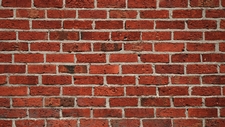Texture

TEKS Objective
Classify matter by physical properties, including shape, relative mass, relative temperature, texture, flexibility, and whether material is a solid or liquid.
Essential Understanding
The student knows that matter has physical properties and those properties determine how it is described, classified, changed, and used.
Science Background
Texture from Touch: Scholarpedia (website) - This article discusses many aspects of texture and the science behind our sense of touch.
Signature Lesson
Lumpy Bumpy, Scratchy, Smooth: Bronx Zoo (website) - This lesson encourages student to touch materials and create an “Experience Chart” to develop a broader texture vocabulary.
Lumpy Bumpy, Scratchy, Smooth
The Bronx Zoo, www.bronxzoo.com
- Supporting Lessons
- Extensions
- Assessment Ideas
- Literature Connections
- Related
TEKS - Additional Resources
Supporting Lessons
Touch Experiments: Neuroscience For Kids (website) - Using only their fingers, students order several grades of sandpaper from smoothest to roughest. Select the “Sand Paper Rankings” activity.
Touch Experiments
Neuroscience For Kids, www.faculty.washington.edu
Elaboration Lessons and Extensions
Texture Tiles: Crayola (website) - Get touchy-feely as students explore texture by creating unique tiles from clay.
Assessment Ideas
Create a bulletin board with 10 different materials that have varying textures and label them A - L. Have students classify the objects in their notebooks, and explain their reasoning.
Literature Connections
What Is Texture. Fitzgerald, S. (ISBN-13: 978-0778751410)
Spiky, Slimy, Smooth: What is Texture? Brocket, J. (ISBN-13: 978-0761346142)
Additional Resources
Touch Experiments: Neuroscience For Kids (website) - Using only their fingers, students order several grades of sandpaper from smoothest to roughest. Select the “Sand Paper Rankings” activity.
Touch Experiments
Neuroscience For Kids, www.faculty.washington.edu
TEKS Navigation
Grade 2
Need Assistance?
If you need help or have a question please use the links below to help resolve your problem.

Comments